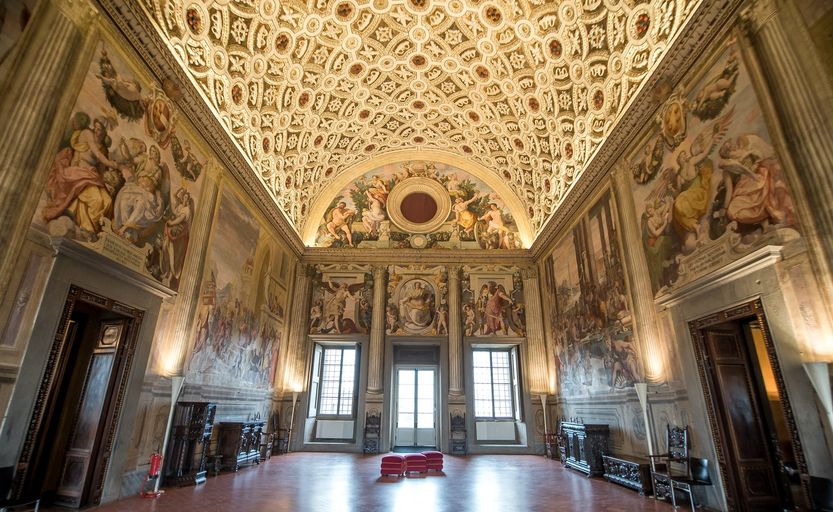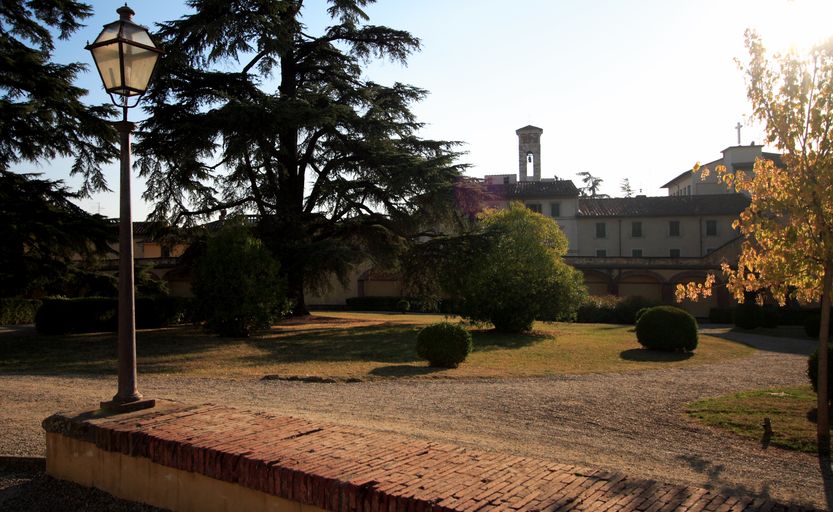
Medici Villa of Poggio a Caiano Unesco World Heritage Site since 2013
On the hill overlooking the town of Poggio a Caiano, the queen of the Medici Villas is presented to the visitor, the most beautiful of the residences built by the Medici in Tuscany and the perfect prototype of the Renaissance villa.
Commissioned by Lawrence the Magnificent, and built to the design of his trusted architect Giuliano da Sangallo between 1484 and 1520, the villa always remained a summer residence, a place of leisure and pleasure, a cultural center and the scene of historic Medici weddings. After the Medici, it passed to the Habsburg-Lorraine family. In the nineteenth century it was the residence of Elisa Baciocchi, sister of Napoleon Bonaparte, and in the period of Florence capital of Italy (1865-1871) it hosted King Vittorio Emanuele II and his morganatic wife Rosa Vercellana "the beautiful Rosina", later Countess of Mirafiori .
The complex, in addition to the villa, includes a large park that reaches the banks of the Ombrone river, with the adjoining neoclassical lemon house and the stables, now a multipurpose structure which also houses the Soffici Museum. The pincer staircase leading to the first floor was added at the beginning of the nineteenth century to a design by Pasquale Poccianti.
Inside you can visit numerous rooms and the theatre, but undoubtedly the environment that leaves all visitors speechless is the magnificent Leone X hall. Since 2007, the Villa has also housed the Still Life Museum, which displays around 200 paintings from the late sixteenth century to the mid-eighteenth century, coming from the Medici collections.
Like any self-respecting historical place, the villa is also the scene of evocative stories and legends such as that of Ambra, from which the villa itself takes its name, and Ombrone. In fact, it is said that a beautiful nymph named Ambra danced every night on the banks of the Ombrone river. Ombrone fell in love with her and wanted her at all costs. To escape him, Amber asked Diana, the goddess of the hunt, for help, who transformed her into a rock. The Ombrone river embraced the rock with its waters, hoping that sooner or later she would yield to its love for her. To remember the legend, in the park there is a statue depicting Ombrone forcibly holding the nymph in its embrace.
The greatest historical mystery linked to the villa, however, remains the mysterious death, in 1587, of Francesco I and Bianca Cappello, the Venetian noblewoman who was first the lover and then the wife of the Grand Duke. Their tormented story was one of the most discussed scandals of the Renaissance and it is perhaps due to this that, when the two died within a day of each other, it was hypothesized that they had been poisoned with arsenic.
Villa Ambra, like the other Medici villas, was declared a World Heritage Site by UNESCO in 2013.
Information
- Piazza dei Medici, 14 - Poggio a Caiano (PO)
Ticket: free entrance.
Reservation required and free of charge at 055 877012.Accessibility for disabled: yes
Phone: 055 877012
Typology: Villas and palaces
It is part of the itineraries: In search of the Medici







